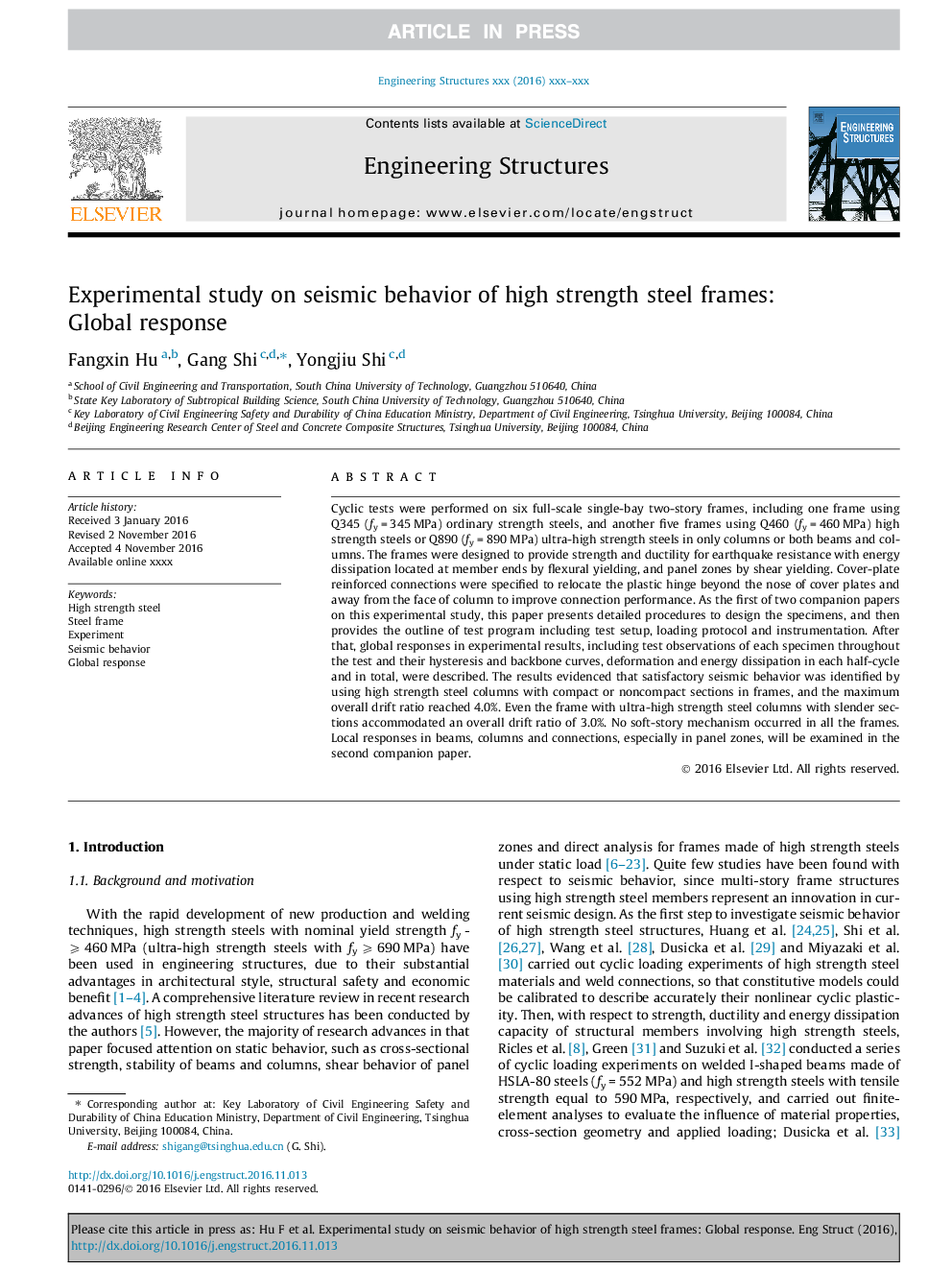| Article ID | Journal | Published Year | Pages | File Type |
|---|---|---|---|---|
| 4920590 | Engineering Structures | 2017 | 17 Pages |
Abstract
Cyclic tests were performed on six full-scale single-bay two-story frames, including one frame using Q345 (fy = 345 MPa) ordinary strength steels, and another five frames using Q460 (fy = 460 MPa) high strength steels or Q890 (fy = 890 MPa) ultra-high strength steels in only columns or both beams and columns. The frames were designed to provide strength and ductility for earthquake resistance with energy dissipation located at member ends by flexural yielding, and panel zones by shear yielding. Cover-plate reinforced connections were specified to relocate the plastic hinge beyond the nose of cover plates and away from the face of column to improve connection performance. As the first of two companion papers on this experimental study, this paper presents detailed procedures to design the specimens, and then provides the outline of test program including test setup, loading protocol and instrumentation. After that, global responses in experimental results, including test observations of each specimen throughout the test and their hysteresis and backbone curves, deformation and energy dissipation in each half-cycle and in total, were described. The results evidenced that satisfactory seismic behavior was identified by using high strength steel columns with compact or noncompact sections in frames, and the maximum overall drift ratio reached 4.0%. Even the frame with ultra-high strength steel columns with slender sections accommodated an overall drift ratio of 3.0%. No soft-story mechanism occurred in all the frames. Local responses in beams, columns and connections, especially in panel zones, will be examined in the second companion paper.
Related Topics
Physical Sciences and Engineering
Earth and Planetary Sciences
Geotechnical Engineering and Engineering Geology
Authors
Fangxin Hu, Gang Shi, Yongjiu Shi,
